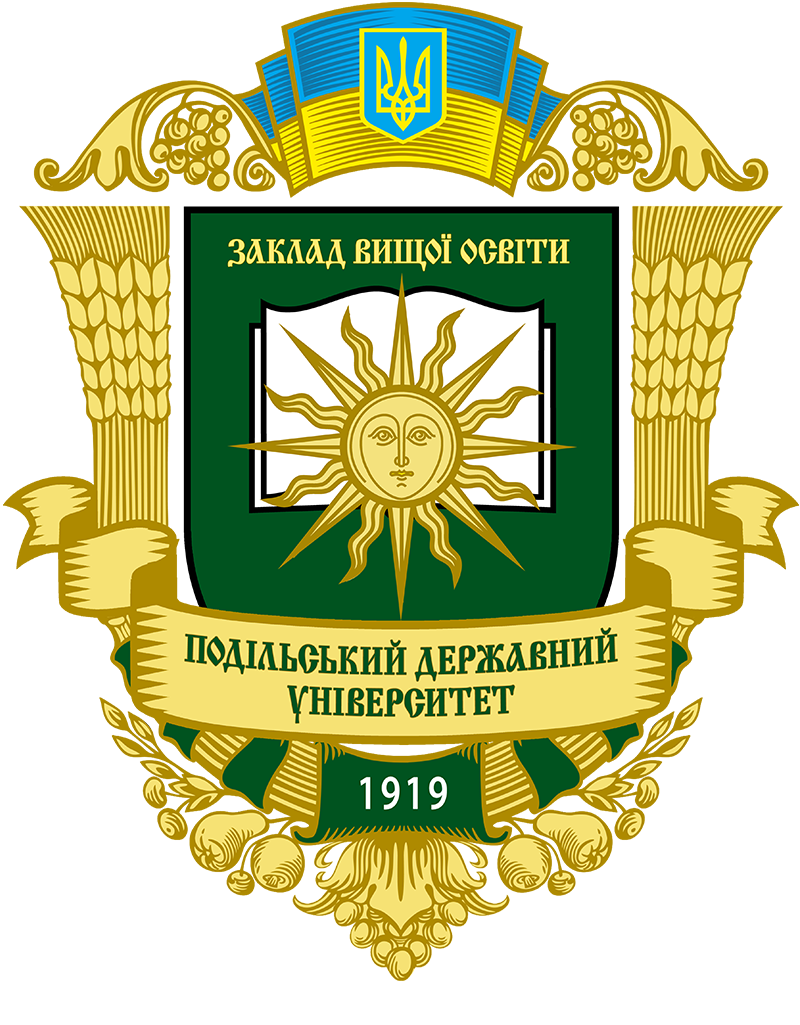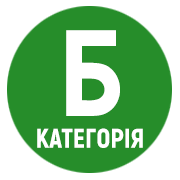YIELD, PRODUCTIVITY, AND ECONOMIC EFFICIENCY OF WINTER WHEAT CULTIVATION DEPEND ON CROP ROTATION LINK AND FERTILIZER SYSTEMS
DOI:
https://doi.org/10.37406/2706-9052-2023-3.3Keywords:
crop rotation links, fertilizer systems, yield, productivity, economic efficiency, winter wheatAbstract
The yield of agricultural crops is influenced by a complex of natural and agrotechnical factors. The productivity of each crop can only be considered in direct relation to the specific conditions of its cultivation. Among the agrotechnical techniques included in modern technologies, the correct placement of varieties after different predecessors in crop rotation is the most important. The structure of crop rotation and the fertilizer system are the simplest and most accessible agrotechnical measures that ensure high productivity of agricultural crops. The objective application of mineral fertilizers is one of the important elements of winter wheat cultivation technology that can solve the problem of optimizing the crop's fertilization system. However, for the conditions of the Northern Steppe of Ukraine, these issues remain insufficiently studied. Therefore, research on the influence of the structure, composition, and placement of crops in short rotation crop rotations, the productivity and yield of winter wheat, and their economic justification are quite relevant. It has been established that the crop rotation factor positively affects the yield of winter wheat when grown after non-steam predecessors and different fertilizer systems. The highest yield level of winter wheat variety Oranta Odeska was observed in the buckwheat–soybean–winter wheat rotation with an organo-mineral fertilizer system, reaching 6.45 t/ha. The yield of winter wheat significantly depended on the use of fertilizer systems in both crop rotation links. The highest yield increments were found in the soybean–soybean–winter wheat rotation with an organo-mineral fertilizer system, reaching 1.94 t/ha. A significant factorial dependence of winter wheat productivity on crop rotation link was proven under conditions without fertilizers and with a mineral fertilizer system. The highest nutrient uptake index was provided by the organo-mineral fertilizer system – 6.96 t/ha and 7.10 t/ha of grain units, 8.93 t/ha and 9.10 t/ha of feed units, 0.76 t/ha and 0.77 t/ha of digestible protein, respectively, for the soybean–soybean–winter wheat and buckwheat–soybean–winter wheat crop rotation links. The highest yield increments of grain and feed units were obtained with the mineral fertilizer system: 2.14 t/ha (44.3%) and 2.74 t/ha (44.3%), respectively. Additional 45.5% (0.24 t/ha) of digestible protein was formed by winter wheat plants in the soybean–soybean–winter wheat crop rotation link with an organo-mineral fertilizer system. The highest economic indicators in winter wheat cultivation were found in the variant without fertilizers in the buckwheat– soybean–winter wheat crop rotation link, which allowed for a net profit of 9136 UAH/ha and a profitability of 62.4% with expenses of 14629 UAH/ha.
References
Boiko, P.I., Martynuk, I.V., & Tsymbal, Ya. S. (2021). Stanovlennia sivozminnykh pryntsypiv u systemakh zemlerobstva [Development of crop rotation principles in farming systems]. Visnyk agrarnoi nauky. 3 (816). 5–13. [in Ukrainian].
Hamaunova, V.V., Korkhova, M.M., & Panfilova, A.B., et al (2021). Pshenytsia ozyma: resyrsnyi potentsial ta tekhnolohiia vyroshchuvannia. [Winter wheat: resource potential and growing technology]. Monohrafiia. Mykolaiv. MNAU. 2021. 300 с. [in Ukrainian].
Jankowski, K.J., Hulanicki, P.S., Sokólski, M., Hulanicki, P., & Dubis, B. (2016). Yield and quality of winter wheat (Triticum aestivum L.) in response to different systems of foliar fertilization. J. Elem., 21(3): 715–728. https://doi.org/10.5601/jelem.2015.20.4.1036.
Kaminskyi, B.F. (2015). Sivozmina yak osnova staloho zemlekorystuvannya ta prodovolchoi bezpeky Ukrainy. [Crop rotation as the basis of sustainable land use and food security of Ukraine]. Zemlerobstvo. 2. 3–13. [in Ukrainian].
Khan, H., Mamrutha, H.M., Mishra, C.N., Krishnappa, G., & Sendhil, R. et al. (2023). Harnessing High Yield Potential in Wheat (Triticum aestivum L.) under Climate Change Scenario. Plants. 12. 1271. https://doi.org/10.3390/ plants12061271
Mashchenko, Yu.V., Kulyk, H.A., Trykina, N.M., & Malahovska, V.O. (2023). Urozhainist pshenytsi ozymoi u sivozminakh Stepu zalezhno vid systemy udobrennia ta biopreparatu. [Yield of winter wheat in steppe crop rotations depending on fertilization systems and biological preparation]. Ahrarni innovatsii. 18. 77–83. https://doi.org/10.32848/agrar.innov.2023.18.11 [in Ukrainian].
Mayer, J., Gunst, L., Mäder, P., Samson, V., Carcea, M., Narducci, V, Thomsen, I.K., & Dubois, D. (2015). Productivity, quality and sustainability of winter wheat under long-term conventional and organic management in Switzerland. European Journal of Agronomy. Volume 65. April 2015. 27–39. https://doi.org/10.1016/j.eja.2015.01.002
Mazur, B.A., Polishchuk, I.S., Telekalo, N.B., & Mordvaniuk, M.O. (2020). Navchalnyi posibnyk z dystsypliny «Rosslynnytstvo ». [Training manual for the discipline «Crop production»]. Vinnytsia. Vydavnytstvo TOV «Druk». 352 s. [in Ukrainian].
Miroshnychenko, M.M., Potapenko, L.V., & Ivanina, V.V. (2017). Chy mozhe buty organichnym zemlerobstvo bez organichnykh dobryv? [Can farming be organic without organic fertilizers?]. Posibnyk ukrainskoho zemleroba. Т. 1. С. 43–45. [in Ukrainian].
Nazarenko, M., Mykolenko, S., & Okhmat, P. (2020). Variation in grain productivity and quality of modern winter wheat varieties in northern Ukrainian Steppe. Ukrainian Journal of Ecology. 10 (3). 102–108, https://doi.org/10.15421/2020_175
Panfilova, A.V., Gamayunova, V.V., & Drobitko, A. . (2020). The yield of winter wheat depending on its fore-crop and stubble bio-destructor. Bulletin of Poltava State Agrarian Academi. 3. 18–25. https://doi.org/10.31210/visnyk2019.03.02
Sieling, K., Stahl, C., Winkelmann, C., & Christen, O. (2005). Growth and yield of winter wheat in the first 3 years of a monoculture under varying N fertilization in NW Germany. European Journal of Agronomy. Volume 22, Issue 1, January 2005. 71–84. https://doi.org/10.1016/j.eja.2003.12.004
Viniukov, O.O, Bondareva, O.B., & Chugrii, G.A. (2017). Osoblyvosti realizatsii potentsialu produktyvnosti sortiv pshenytsi ozymoi v agroklimatychnykh umovakh Donetskoi oblasti [Peculiarities of realizing the productivity potential of winter wheat varieties in the agro-climatic conditions of the Donetsk region]. Tavriiskyi naukovyi visnyk. 102. 9–14. [in Ukrainian].
Yermolaiev, M.M., Litvinov, D.V., & Kvasnitska, L.S. (2014). E fektyvnist sivozminy yak osnovnoi lanky v organichnomu zemlerobstvi na chernozemakh [Effectiveness of crop rotation as the main link in organic farming on chernozems]. Zbirnyk naukovykh prats NNTs «Instytut zemlerobstva NAAN». 1–2. 26–30. [in Ukrainian].
Yeshchenko, B.O. (2015). Rol sivozmin u suchasnomu zemlerobstvi. [The role of crop rotation in modern agriculture]. Zemlerobstvo. 1. 23–27. [in Ukrainian].










